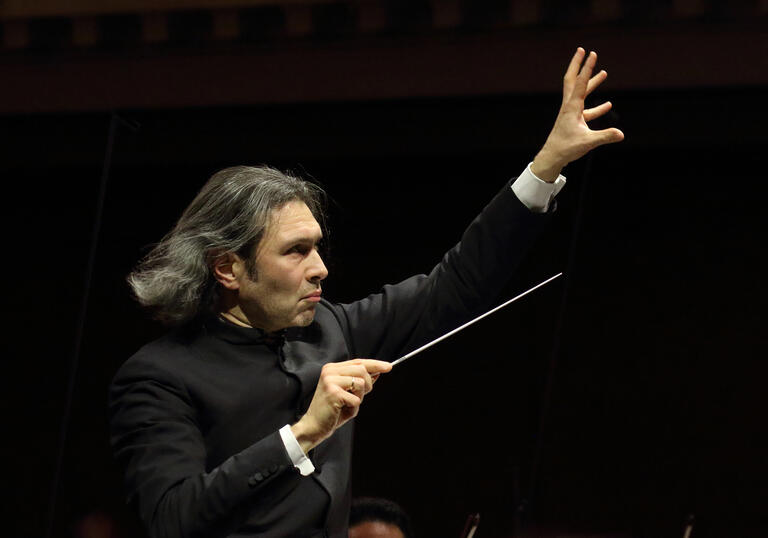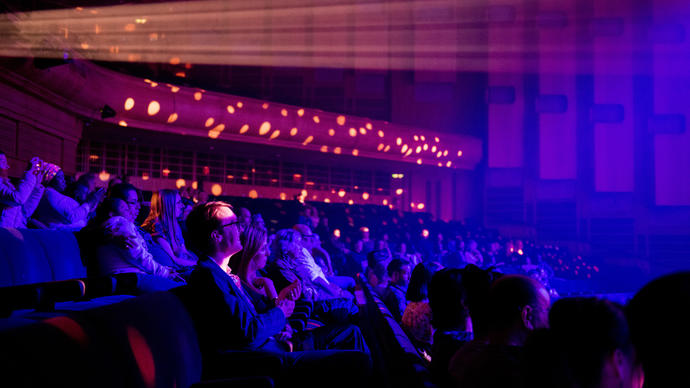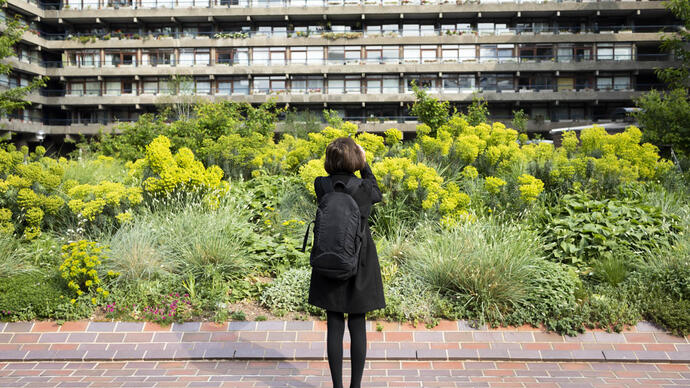
Programme and performers
Victoria Poleva White Interment (UK premiere)
Alban Berg Violin Concerto
1. Andante
2. Allegro
Richard Strauss Eine Alpensinfonie
Night – Sunrise – The ascent – Entering the forest – Wandering by the brook – At the waterfall – Apparition – On the flowery meadows – On the mountain pasture – Lost in thickets and undergrowth – On the glacier – Precarious moments – On the summit – Vision – Mists rise – The sun is gradually obscured – Elegy – Calm before the storm – Thunderstorm, descent – Sunset – Epilogue – Night
Bayerisches Staatsorchester
Vladimir Jurowski conductor
Vilde Frang violin
Artist biographies
The Bayerisches Staatsorchester this year celebrates its 500th birthday, making it one of the oldest orchestras in the world, rich in tradition. As the in-house ensemble of the Bayerische Staatsoper, the musicians feel at home both in the orchestra pit and on stage.
In 2022 it was voted Orchestra of the Year for the eighth consecutive year by opera critics in Opernwelt magazine. The same year it won the opera and orchestral categories at the Gramophone Awards, with Korngold’s Die tote Stadt additionally being voted Record of the Year.
The Bayerisches Staatsorchester began life as the Munich court orchestra. Its origins can be traced back to the year 1523. The ensemble’s first well-known director was Orlando di Lasso from 1563. While the focus of its artistic expression consisted initially of church music, as the 17th century progressed more mainstream concerts and opera performances were added to their repertoire. By the mid-18th century, operas were being performed more regularly and today constitute one of the orchestra’s principal focuses. The world premieres of Mozart’s La finta giardiniera (1775) and Idomeneo (1781) were early milestones.
In 1811 the members of the court orchestra founded the Musical Academy which hosted Munich’s first ever public concert series, the academy concerts. Here, the Munich audience were introduced to musicians such as Clara Schumann, Johannes Brahms and Edvard Grieg. Today, the Musical Academy continues to influence the cultural life of the city and the state of Bavaria. Alongside symphonic concerts at the Nationaltheater and a variety of chamber music series, the academy is also home to the ATTACCA youth orchestra and the Hermann Levi Academy which are committed to supporting and training musicians at the start of their careers. Through the company Bayerisches Staatsorchester Konzert GmbH the Musical Academy organises and manages its orchestra tours and symphonic guest performances itself. These regularly take the orchestra to the music capitals of the Europe, including Berlin, Hamburg, Frankfurt, Milan, Paris, Vienna, Lucerne and London, as well as further afield to Tokyo, Seoul, Taipei and New York.
Among the many great composers with whom the orchestra have been affiliated, Richard Wagner is prominent. In 1865 Hans von Bülow conducted the world premiere of Tristan und Isolde at the Nationaltheater. Three further Wagner operas were also premiered in Munich: Die Meistersinger von Nürnberg (1868), Das Rheingold (1869) and Die Walküre (1870).
The orchestra has had a distinguished roster of chief conductors, from Richard Strauss, Hermann Levi, Felix Mottl, Bruno Walter and Hans Knappertsbusch to Georg Solti, Joseph Keilberth, Wolfgang Sawallisch, Zubin Mehta, Kent Nagano and Kirill Petrenko. The orchestra also enjoyed a close relationship with Carlos Kleiber. Vladimir Jurowski became General Music Director of the Bayerisches Staatsorchester in the 2021/22 season.

Our Patrons and supporters
Find out about our Patrons, who help us keep our programme accessible to everyone and allow us to continue investing in the artists and communities we work with.
Love the arts? Become a Patron to engage more closely with our programme.

Who we are
Meet our management team, our Board and the Trustees of our charitable arm, Barbican Centre Trust.
